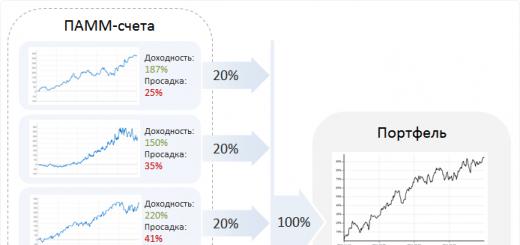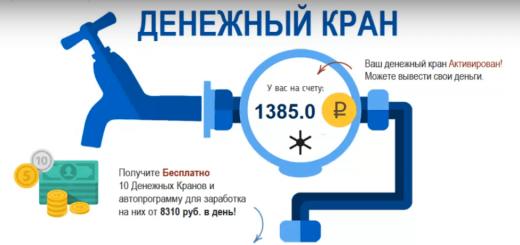Tax reporting
includes a set of documents reflecting information on the calculation and payment of taxes by individuals, individual entrepreneurs and organizations.
Tax reporting includes the tax return and the tax calculation of the advance payment.
Tax return
This is an official statement of the taxpayer, which contains information about the objects of taxation, income received and expenses incurred, sources of income, tax base, tax benefits, the amount of tax payable and other data serving as the basis for calculating tax. (Article 80 of the Tax Code of the Russian Federation).
Tax calculation of advance payment
This is an official statement of the taxpayer, which contains information about the objects of taxation, about income received and expenses incurred, about sources of income, about the tax base, tax benefits, about the amount of the advance payment payable and about other data that serves as the basis for calculating the advance payment. (Article 80 of the Tax Code of the Russian Federation).
Calculation of personal income tax amounts calculated and withheld by the tax agent (Form 6-NDFL)
This is a document containing information summarized by the tax agent in general on all individuals who received income from a tax agent (a separate division of the tax agent), about the amounts of income accrued and paid to them, provided tax deductions, about calculated and withheld amounts of tax, as well as other data serving as the basis for calculating tax.
Financial statements
This is information about the property and financial position of the organization and the final results of its economic activities in a certain period.
The reporting is submitted to the tax authority at the place of registration of the taxpayer (fee payer, tax agent). The procedure for taxpayers to submit tax reports to the tax authorities is regulated by Article 80 of the Tax Code of the Russian Federation.
Presentation methods
There are two options for submitting tax and financial statements:
- On paper;
- In electronic form.
Paper presentation
The tax return (calculation) can be submitted in the prescribed form on paper.
You can submit reports to the Federal Tax Service in person or through an authorized representative.
A tax return can be submitted either personally by the head of the organization (entrepreneur) or an accountant, or by an authorized representative of the organization (entrepreneur).
The date of submission of tax returns and financial statements by a legal or authorized representative of an organization is considered to be the date of their actual submission to the tax authority on paper.
In accordance with the requirements, the maximum waiting time in line should not exceed 15 minutes! If the queue time exceeded 15 minutes, please let us know.
- if the average number of employees for the previous calendar year exceeds 100 people;
- if an organization with more than 100 employees has been created (including reorganized);
- if such an obligation is provided for in relation to a specific tax. From 01/01/2014, this rule will apply to value added tax.
Information on the average number of employees for the previous calendar year is submitted by the organization (individual entrepreneur who hired employees during the specified period) to the tax authority no later than January 20 of the current year, and in the case of creation (reorganization) of the organization - no later than the 20th day of the month following for the month in which the organization was created (reorganized).
We receive an electronic signature
A qualified electronic signature can be obtained from a certification center accredited by the Ministry of Telecom and Mass Communications Russian Federation. The list of certification centers is available on the official website of the Ministry of Telecom and Mass Communications of the Russian Federation in the section “Accreditation of certification centers”. At the same time, for correct authorization in the service, it is recommended to use a qualified certificate of an electronic signature verification key, issued in accordance with the requirements of Order of the Federal Tax Service of Russia dated 04/08/2013 No. ММВ-7-4/142@ “On approval of the Procedure for using qualified certificates of electronic signature verification keys in information systems of the Federal Tax Service of Russia.
When reporting under the TCS, it must be transmitted using an enhanced qualified electronic signature (Article 80 of the Tax Code of the Russian Federation).
The concept of an enhanced qualified electronic signature was introduced by Federal Law dated April 6, 2011 No. 63-FZ “On Electronic Signatures” (Article 5 of the Law).
A document in electronic form, signed with an electronic signature, acquires legal status, i.e. has the same legal force as a paper document with a handwritten signature and seal.
A document signed with an electronic digital signature during the validity period of the verification key certificate issued in accordance with the Federal Law of January 10, 2002 No. 1-FZ “On electronic digital signature”, but no later than December 31, 2013, is equivalent to an electronic document that is signed with an enhanced qualified electronic signature.
We purchase software
compatible with the software installed in your tax office, and install it on a computer with Internet access. The necessary software may be provided by your telecom operator.
When transmitting a tax return (calculation) via telecommunication channels, the day of its submission is considered the date of its dispatch.
How long will it take to submit tax reports to the Federal Tax Service?
When submitting a tax return (calculation) in person, documents are accepted immediately at the time of its submission. In this case, the maximum time for receiving one tax return at the tax office is ten minutes.
I don’t have time to go to the tax office, can my spouse file a tax return for me?A tax return can be submitted to the Federal Tax Service either personally or through an authorized representative. Required condition in this case, the representative of the taxpayer has a notarized power of attorney. That is, only with a notarized power of attorney can a spouse represent the spouse’s interests in relations with the tax authorities and, in particular, submit a tax return for her.
How is the confidentiality of information transmitted via telecommunications channels ensured?01Jan
Hello, dear readers! We have already noted that a whole series of articles has accumulated in the section of the site, which is a little problematic for beginners to navigate. Especially if at the same time the essence of the articles needs to be synchronized with reporting forms - you can find them in the section.
Previously, we made a general article about. Today we’ll talk about LLC reporting and deadlines for its submission.. And, of course, we will try to provide links in the text to all useful articles and forms that are available on the site.
For more convenient and quick submission of LLC reports, everyone uses THIS service.
As always, we first divide the LLC’s reporting into groups. Here, unlike individual entrepreneurs, there will be five groups, not four. I’ll tell you why this is so later. So, the groups:
Now let's take a closer look at each group.
LLC reporting according to the taxation system used
The standard rule applies here: what tax we pay - such a declaration must be submitted to the Federal Tax Service. We present the basic information in the form of a table:
| Tax regime | Declaration (form) | Due dates |
| BASIC (general mode) | If you pay quarterly advance payments: made for a quarter, half a year, 9 months before the 28th day of the month following the specified period, and for a year before March 28 of the following year If you pay monthly advance payments: made per month, 2 months, 3 months, etc. up to 11 months before the 28th day of the month following the specified period, and a year before March 28 of the following year |
|
| Compiled based on the results of the quarter before the 25th day of the month following this quarter | ||
| Unified tax on imputed income (UTII) | Compiled for a quarter, must be submitted by the 20th day of the month following that quarter. | |
| Compiled for a year, must be submitted by March 31 of the following year. | ||
| Compiled based on the results of the quarter, before the 25th day of the month following the quarter |
As always I will add: LLC in the general regime is a VAT payer, therefore the table shows two declarations: for income tax and VAT. Special regimes are exempt from VAT, except for the Unified Agricultural Tax (under which the obligation to pay VAT and submit a declaration was introduced from 01/01/2019), for the simplified tax system, UTII we submit only the declaration corresponding to the special regime used. The obligation to submit a report and pay VAT for these entrepreneurs arises only in special cases, for example, renting premises from the municipality. When combining regimes, for example, simplification and imputation, you will have to submit 2 declarations, that is, one for each regime.
We have already written about how to fill out declarations (all examples for individual entrepreneurs also apply to LLCs, the essence of filling out the data on the form is the same):
As for KUDIR for LLC, there are some peculiarities.
Firstly, LLC will fill out KUDIR only in a simplified special mode. . General regime LLCs and Unified Agricultural Taxes do not maintain KUDIRs; they take all the necessary information for calculating tax from accounting. No one keeps a book of income/expenses on UTII: it simply doesn’t exist. But no one has canceled the recording of physical indicators, so it will still have to be organized.
The following articles may help you fill out the KUDIR:
- (for combining modes).
Submitting reports on additional taxes
Depending on the specifics of the LLC’s activities, it may pay other taxes. These include:
- Land tax - ;
- Transport tax - ;
Both declarations are drawn up based on the results of the calendar year and are submitted before February 1 of the following year.
- Water tax - compiled based on the results of each quarter, must be submitted by the 20th day of the month following this quarter;
- Gambling business tax - if you work in this area, then at the end of each month you will need, the due date is the 20th of the next month;
For legal entities working in the field of mining, or legal entities whose activities are related to the use of wildlife / aquatic biological resources (aquatic biological resources), the following taxes / fees must be paid and submitted:
- Mineral extraction tax (abbreviated as severance tax) - is compiled for each month, must be submitted by the end of the next month;
- Fees for the use of wildlife objects are submitted to the tax office, the deadline for submission is within 10 days from the date of receipt of such permission;
- Fees for the use of FBR facilities - here two types of reporting must be submitted to the tax office:
- – also surrendered within 10 days from the date of receipt of such permission;
- – surrendered before the 20th day of the month following the last month of validity of the received permit.
- Regular payments for the use of subsoil - submitted to the tax office, drawn up for the quarter, due date - no later than the last day of the month following this quarter.
LLC reporting on employees
As for contributions for employees, then with reporting everything is the same as with. In 2019, we report to the tax office (average headcount, 2-NDFL, 6-NDFL and calculation of insurance premiums), to the Pension Fund of the Russian Federation (SZV-M and information about insurance experience insured persons) and to the Social Insurance Fund (we submit 4-FSS for contributions for injuries).
Organizational reporting on cash transactions
We have also written about cash transactions more than once. So, organizations are required to observe cash discipline, including setting a cash limit - the maximum amount of cash that can be stored in the cash register (everything in excess of it must be deposited at the bank). There is a relaxation for small organizations: there is no need to set a cash limit, but this decision must be formalized by an appropriate order. You can find out what kind of business you belong to: small, medium or large - using established criteria.
Tax reporting is a set of documents required to be submitted to the tax authorities after certain periods of time or upon the occurrence of specific events. An example of the latter is the case when individual entrepreneur in general mode, ceases to conduct its business activities. He must submit to his Federal Tax Service at the place of registration a declaration in form 3-NDFL within 5 working days from the date of termination of activity, and not at the end of tax period, in which the activity was terminated (clause 3 of Article 229 of the Tax Code of the Russian Federation).
The main reason why organizations and individual entrepreneurs must submit tax reports is tax control. Its most common form is a desk audit of submitted declarations.
Types of tax reporting
The concept of tax reporting includes (clause 1 of Article 80 of the Tax Code of the Russian Federation):
- , submitted separately for each type of tax, if the obligation to submit them is established by the Tax Code of the Russian Federation. After all, for example, individual entrepreneurs with a patent do not have to submit reports regarding their patent activities to the tax office;
- calculation of advance payments, as in the case of;
- fee calculation;
- calculation personal income tax amounts, calculated and withheld by the tax agent, according to form 6-NDFL (clause 2 of article 230 of the Tax Code of the Russian Federation). Also, at the end of the year, tax agents must submit certificates in Form 2-NDFL;
- calculation of insurance premiums (clause 7 of Article 431 of the Tax Code of the Russian Federation).
Composition of tax reporting
An organization's tax reporting depends primarily on the tax regime it applies. In accordance with it, it is determined for which taxes the company is a payer and, as a result, for which taxes it must report to the Federal Tax Service. Thus, simplified organizations must submit to the Federal Tax Service:
- tax returns paid in connection with application of the simplified tax system(clause 1 of article 346.23 of the Tax Code of the Russian Federation);
- reporting on personal income tax (calculation 6-NDFL, certificates 2-NDFL);
- calculation of insurance premiums;
- declarations on property taxes if they have the corresponding objects of taxation (on the property tax of organizations, land and transport taxes). For general regime employees, the reporting list will be a little longer.
The deadlines for submitting tax reports in 2017 are given in
Each organization, regardless of whether it operates under the general taxation system (GTS) or the simplified taxation system (STS), is required to submit annual accounting and tax reports (hereinafter referred to as reporting documentation - OD). Annual reporting is the most comprehensive in terms of the information included in it about the operation of the enterprise, and therefore is considered very important. Drafting an OA serves many purposes. The accounting OD of a company is of interest not only to authorities, but also to the enterprise itself.
The meaning of drawing up an OD
Any OD, be it quarterly or annual, contains information about the current financial position of the company. This information is necessary for government agencies (hereinafter GO) to present the situation about the real state of affairs of the enterprise. Based on reports from firms, authorities compile general statistics, which are the basis for analysis and making various decisions at the state level. Also, GOs, using the information provided, monitor the conduct of the company’s activities, and in case of any shortcomings, omissions or violations, they impose various fines on the company.
In addition to civil engineering, OA is also necessary for enterprises themselves. Obtaining regular information about the financial state of an organization helps its managers make various management decisions. OA is very important for the stable operation of the entire enterprise and the realization of its development prospects.

Users of accounting information
Quarterly and annual reporting are consolidated forms accounting information about the enterprise. Accounting information always has users, that is, those who use this information for various purposes, which were stated above. All users of accounting information are divided into internal and external. Internal ones include heads of companies, higher organizations (if any), and management divisions (if the enterprise is large). External users include federal Service state statistics(Rosstat), Federal tax service(Federal Tax Service), Pension Fund(PFR), Fund social insurance(FSS). External users also include any individuals and legal entities, since the accounting OD of any company must meet the principles of openness and accessibility to any user.
The above external users of accounting information, excluding individuals and those not specified legal entities, impose liability on the company if it does not submit the OA on time. In case of delay, the Civil Defense has the right to impose a fine, not the enterprise.

Types of OA
OD is divided into types: statistical, operational, accounting, tax. Statistical OA is intended to be submitted to statistical authorities. The purpose of operational OD is operational accounting at the enterprise. This type of OA includes those things that are not reflected in the accounting OA, but are also necessary for the normal operation of the company. Such things include employee attendance, production capacity, and the like. A characteristic feature of operational OA is the time it is provided, which, as a rule, is equal to one working day. Accounting OD reflects the financial state of affairs of the enterprise. Tax OD is formed for the purposes tax accounting at the enterprise.
Accounting OD, in turn, is divided according to frequency and volume. According to the frequency of OA, it can be quarterly (intra-annual) or annual. In accordance with the law, accounting OA must be of an incremental nature, that is, documentation for the first quarter must include information only from the first quarter of the year, OA for the second quarter must contain information from the first and second quarters, and so on. Annual reports include information for all four quarters.

In terms of volume, the quarterly and annual reporting of an organization can be primary and summary (consolidated). If an enterprise has subsidiaries, then the accounting OD within a single subsidiary or within it itself will be primary. The consolidated OA is compiled from all primary securities of subsidiaries and the parent organization inclusive.
Requirements for OA
The main requirements for the preparation of OA are relevance, integrity, reliability, comparability, and timeliness.
- The relevance of the data characterizes OD as a set of information about the position of the enterprise on a specific date. You cannot provide OA, for example, for the third quarter, which will provide information for the second.
- Integrity means providing information in the report about the work of the enterprise, covering all areas of its activities and financial regulations subsidiaries (if any).
- The reliability of the OA allows any user of this information to be confident that it reflects the real state of affairs of the enterprise.
- For the purpose of comparing the work of a company in different periods of time, the OA must comply with the principle of comparability, that is, have units of measurement common to all periods of its work.
- Timely quarterly or annual financial statements obliges the enterprise to provide OA within strictly defined periods by law.
In addition to the above requirements, OA must also meet such principles as mandatoryness, unity of forms and methods, simplicity, public accessibility, brevity, clarity, and publicity.
Procedure for drawing up OD
The compilation procedure can be roughly divided into two stages: preparation and formation. At the preparation stage, all the necessary information is collected to form an OA. Also at this stage, it is very important to detect and correct (if identified) various accounting errors, since their presence in quarterly or annual tax reporting can cause fines from tax authorities for distorting the true state of affairs of the organization. At the formation stage, the process of compiling an OA takes place. After completion of both stages, the documentation must be signed by the head, chief accountant of the company and have a seal.

Errors in OA
The organization must correct all errors identified during the preparation of the OA. Errors are divided into significant and insignificant. An error that affects the management accounting of internal users of this accounting information is considered significant. That is, if it is capable of greatly changing the strategy of the enterprise’s economic activities. A significant error is defined similarly for external users. In other cases, the error is regarded as insignificant, but it also needs to be corrected.
Any errors can be freely corrected before the annual reporting is submitted and approved by the State Administration or other internal or external users. If the OA has already been submitted to users, but has not yet been approved by them, then it is necessary to send the corrected OA to them with a note to replace the old version.
There are two options for correcting significant errors. By reflecting the identified results of errors in account 84 “Retained earnings” or by retrospective recalculation.

Basic forms of annual reporting
The OA forms that all enterprises, both large and small, are required to submit to the Civil Defense are completed accounting forms. balance sheet (No. 1) and form (No. 2, otherwise called the loss and profit statement). In addition, attachments must be attached to the balance sheet: a change report form. capital (No. 3) and movement report form. den. funds (No. 4). The balance sheet should also be accompanied by an explanatory note highlighting those things in the company's activities that cannot be represented by numbers. Enterprises operating under the simplified tax system may not provide forms 3 and 4. These reports must be submitted to the Federal Tax Service and Rosstat at the end of the year or at the beginning of the next (for the previous one). At the same time, an individual entrepreneur, regardless of its taxation system (OSN or simplified tax system), may not provide an annual balance sheet and investments to the Federal Tax Service, but must submit them to Rosstat also once a year.

The above composition of the annual reporting is basic, but not exhaustive.
List of annual OA for companies on OSN
Below is a list and deadlines for annual reporting for organizations operating under the SOS:
- VAT declaration - until the end of January (Federal Tax Service).
- Form 3-NDFL (for individual entrepreneurs) - until the beginning of May (Federal Tax Service).
- Form 1-IP (for individual entrepreneurs) - until the beginning of March (Rosstat).
- employees - until the end of January (Federal Tax Service).
- Three types of tax declarations (property tax, transport tax, land tax) - until the end of January (FSS).
List of annual OA for companies using the simplified tax system
Below is a list and deadlines for annual reporting for organizations operating under the simplified tax system:
- Form 4-FSS - until the end of January (FSS).
- Form RSV-1 - until mid-February (PFR).
- The average number of employees is until the end of January (Federal Tax Service).
- Two types of tax declarations (transport tax, land tax) - until the end of January (FSS).
- Declaration of the simplified tax system - until the end of March (Federal Tax Service).
- Forms 6-NDFL, 2-NDFL - until the beginning of April (Federal Tax Service).
- Confirmation of the main type of activity (not for individual entrepreneurs) - until mid-April (FSS).
- PM form (for small enterprises) - until the end of January (Rosstat).
- Balance sheet and investments - until the end of March (Federal Tax Service, Rosstat).
30Jan
Good afternoon, our dear readers! The section has already accumulated quite a lot of articles that have been published on the site for about a year and a half. In addition, we have made a section for you where you can download valid forms declarations, KUDIR, various reports and read brief requirements for filling them out. It's time to organize this information a little, and there is quite a lot of information accumulated!
Let me say in advance that the most convenient way to generate and submit reports is through special service.
Today we will partially try to do this: we will try to briefly and clearly talk about what kind of reporting must be submitted to an individual entrepreneur.
Individual entrepreneur reporting
Let me start, perhaps, with the fact that all the reporting that an individual entrepreneur must submit/keep can be divided into several groups for convenience. Basically, there are four of them:
- Reporting on the taxation system used;
- Reporting on other taxes (if necessary);
- Reporting for employees (if there are any, of course);
- Reporting on cash transactions (if there are cash transactions).
Now let's look at each of these four groups in more detail.
Individual entrepreneur reporting according to the taxation system used
Everything is simple here: what basic tax we pay is the declaration we submit. We combine two modes - which means we submit two declarations. Where do we rent? Of course, to the tax office. All information is in the following table:
| Tax regime | Declaration (form) | Due dates |
| 4-NDFL | Compiled after receiving the first income, it must be submitted within 5 days after the expiration of a month from the date of receipt of this income (for new individual entrepreneurs) | |
| * | ||
| Compiled for a year, must be submitted by April 30 of the following year. | ||
| Unified tax on imputed income (UTII) | Compiled for a quarter, must be submitted by the 20th day of the month following that quarter. | |
| There is no declaration | Doesn't give up | |
| Compiled for a year, must be submitted by March 31 of the following year. | ||
| Compiled based on the results of the quarter before the 25th day of the month following this quarter |
*And a little comment: Individual entrepreneur in general mode (OSNO) is a VAT payer, therefore he must report on this tax in addition to personal income tax. From January 1, 2019, entrepreneurs on the Unified Agricultural Tax also became obligated to pay VAT, so they will also be forced to submit this declaration. The rest of the taxation systems belong to special regimes that exempt from VAT, except for those transactions that are subject to mandatory taxation; accordingly, you only need to submit a declaration according to your regime.
When combining modes, and most often they combine the simplified tax system and UTII, both declarations are submitted. Another option for combining these regimes is with a patent: here there will be only one declaration, since there is simply no declaration under PSN.
We have already written about how to fill out declarations:
Each tax regime has its own KUDIR form. Let me remind you that KUDIR must be maintained without fail. There is no need to go to the tax office to certify it, this has long been canceled, but you should have it in your possession: printed, numbered and stitched. The form of the book depends on the tax regime:
You may need the following items to complete:
- (for combining modes);
Individual entrepreneur reports on other (additional) taxes
Individual entrepreneur can carry out the most different types activities, depending on this, he may have an obligation to pay and report on other taxes. This group of taxes includes:
- Land tax;
- Transport tax;
For these two taxes, only legal entities submit a declaration; individual entrepreneurs do not submit it: the tax office itself will calculate the tax and send a notification.
- Water tax - compiled based on the results of each quarter, must be submitted by the 20th day of the month following this quarter;
For individual entrepreneurs who work in the field of extraction of natural resources or use of wildlife / aquatic biological resources (aquatic biological resources), you need to pay and submit documents for the following taxes / fees:
- Mineral extraction tax (abbreviated as severance tax) - is compiled for each month, it must be submitted by the end of the next month;
- Fees for the use of wildlife objects are submitted to the tax office, the deadline for submission is within 10 days from the date of receipt of such permission;
- Fees for the use of FBR facilities - here two types of reporting must be submitted to the tax office:
- – also surrendered within 10 days from the date of receipt of such permission;
- – surrendered before the 20th day of the month following the last month of validity of the received permit.
- Regular payments for the use of subsoil - submitted to the tax office, drawn up for the quarter, due date - no later than the last day of the month following this quarter.
Reporting of individual entrepreneurs with employees
If an individual entrepreneur works himself, he simply pays insurance premiums for himself: a fixed amount and, if the amount of his income is more than 300 thousand. In this case, no reporting is required.
But if an entrepreneur has employees, then the volume of reporting that must be prepared and submitted to the appropriate authorities increases sharply. In 2019, documents are submitted to three places: the tax office, the Pension Fund and the Social Insurance Fund.
What and where to submit, we read in the article - here we have already discussed this issue in detail with links to document forms.
Individual entrepreneur reporting on cash transactions
Let me remind you once again that individual entrepreneurs who have operations related to receiving / issuing / storing Money, must observe cash discipline. Moreover, compliance with cash discipline does not depend in any way on the tax payment regime used and the availability of a cash register.
Those who, as part of maintaining cash discipline, maintain these documents can find information about them and download the forms in the section. For example, this is relevant for fairly large individual entrepreneurs working in the trade sector and having several stores.
Relaxations in compliance with cash discipline for individual entrepreneurs do not apply to the payment of wages to employees in cash. If you pay your employees in cash, what are your obligations?
Service for maintaining and submitting reports for individual entrepreneurs
Eat useful service “My Business” for submitting reports via the Internet, accounting, etc.
With it, submitting reports is very simple, because the documents are filled out automatically, the calendar will always tell you when and what to submit, completed documents can be sent via the Internet. Saves a lot of time, effort and patience!
That's all. If you have questions, write in the comments.










